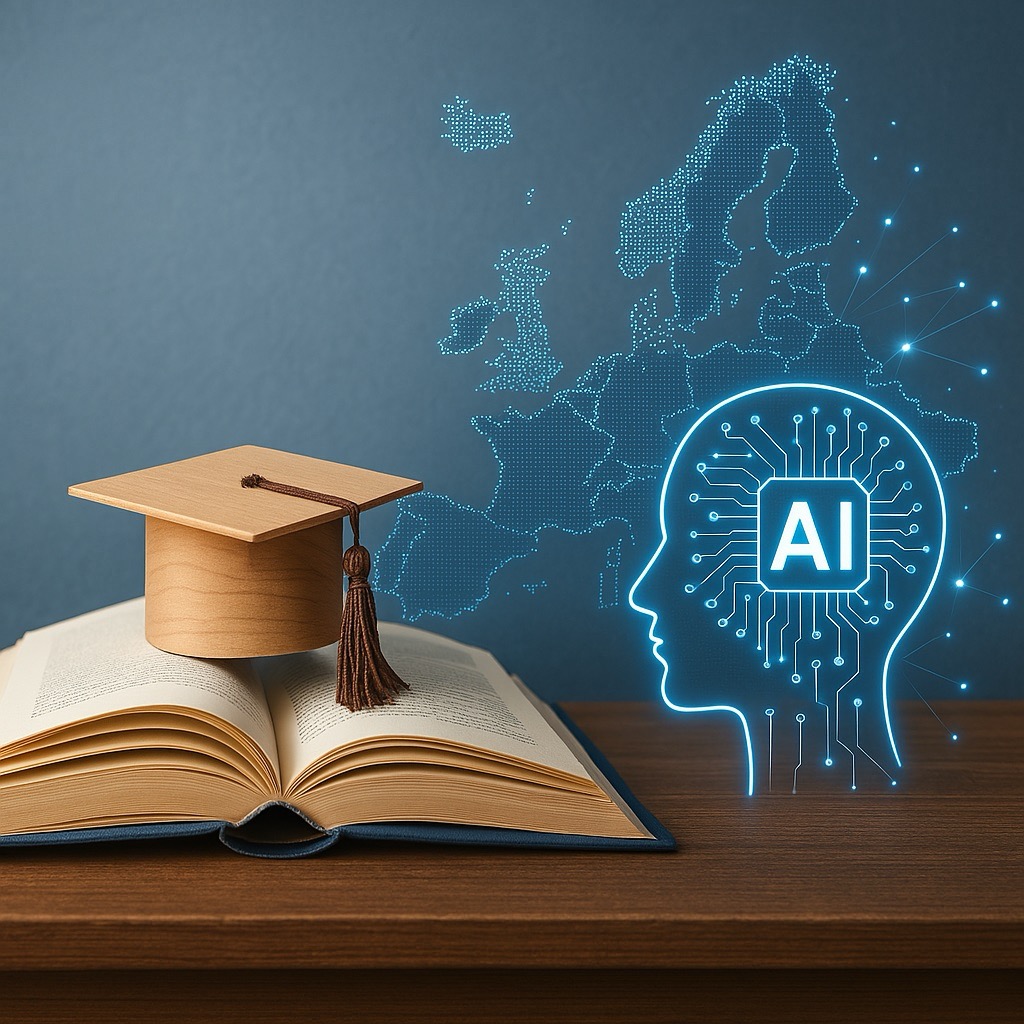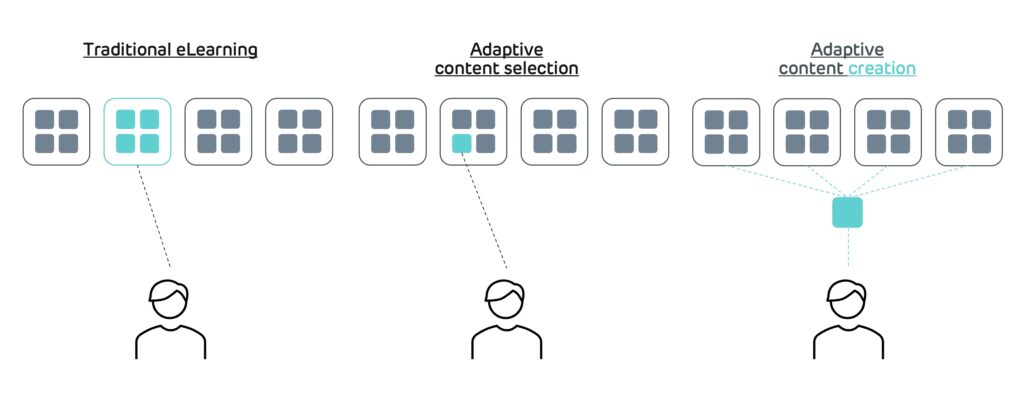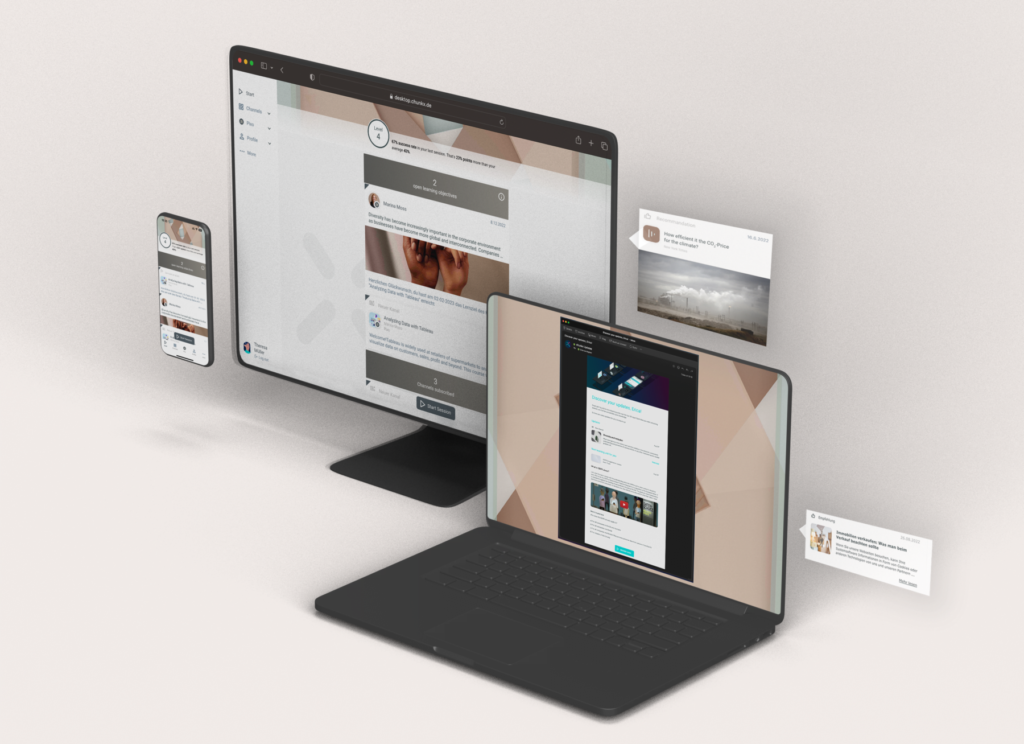Die Kernforderungen des EU AI Act
Der EU AI Act verlangt, dass Unternehmen sicherstellen, dass Mitarbeitende über technisches, ethisches, rechtliches und sicherheitsbezogenes Wissen im Umgang mit KI verfügen – abgestimmt auf die Risikoklasse der eingesetzten KI-Systeme. Ohne diesen Nachweis drohen Sanktionen von bis zu 35 Millionen Euro oder 7 % des weltweiten Jahresumsatzes.

So unterstützt chunkx euer Unternehmen
chunkx ermöglicht es Unternehmen, den Anforderungen des EU AI Acts effizient und flexibel nachzukommen. Unsere Plattform setzt dort an, wo traditionelle Lernmethoden oft scheitern: Wir kombinieren KI-geschriebene, hyperpersonalisierte Lerninhalte mit den spezifischen Bedürfnissen eurer Mitarbeitenden und eurem Unternehmenswissen.
1. Kompetenzanalyse für maximale Relevanz
chunkx analysiert die Kompetenzen jedes einzelnen Mitarbeitenden und erstellt darauf abgestimmte Lerninhalte – individuell und präzise. Egal ob Einsteiger:in, Datenanalyst:in oder Führungskraft – alle lernen gezielt, was sie benötigen, um KI sicher und effektiv zu nutzen.
Vorteil: Hyperpersonalisierte Mikrolerneinheiten sparen Zeit und maximieren den Wissenszuwachs.
2. Automatisierte Erstellung hochwertiger Inhalte
Unsere KI nutzt bestehende Ressourcen – wie den EU AI Act oder andere öffentlich zugängliche Informationen – und erstellt darauf basierend sofort einsatzbereite Inhalte. Unternehmen können so schnell und kostengünstig relevante Weiterbildungen bereitstellen.
Vorteil: Zeit- und Kostenersparnis durch automatisierte Inhaltsbereitstellung mit konsistenter Qualität.
3. Lernen im Arbeitsalltag integrieren
chunkx macht Lernen zum Teil des beruflichen Alltags: Unsere kurzen Lerneinheiten lassen sich direkt in bestehende Kommunikationskanäle wie Microsoft Teams, E-Mails oder Slack integrieren. Statt einer losgelösten Plattform setzen wir auf kontextbezogenes Lernen „on the job“.
Vorteil: Mitarbeitende wenden das Gelernte direkt an, was den Lerneffekt erhöht und den sicheren Umgang mit KI fördert.
4. Nachhaltiger Kompetenzaufbau
chunkx ist mehr als ein einmaliges Tool: Unsere Plattform unterstützt den langfristigen Aufbau einer Lernkultur. Kontinuierlich aktualisierte Inhalte sorgen dafür, dass eure Mitarbeitenden nicht nur gesetzeskonform geschult sind, sondern auch den Herausforderungen der Zukunft gewachsen bleiben.
Vorteil: Nachhaltigkeit und Zukunftssicherheit durch kontinuierliches Lernen.
Der EU AI Act: Risiken und Chancen
Der EU AI Act setzt klare Rahmenbedingungen für den Umgang mit KI und bietet gleichzeitig Chancen: Geschulte Mitarbeitende können Prozesse optimieren, Innovationen fördern und Vertrauen in KI-Technologien schaffen. chunkx sorgt dafür, dass euer Unternehmen nicht nur die Vorgaben erfüllt, sondern auch von ihnen profitiert.
Fazit: Compliance leicht gemacht mit chunkx
chunkx ist die perfekte Lösung, um den EU AI Act erfolgreich umzusetzen. Unsere hyperpersonalisierte Lernplattform vermittelt KI-Kompetenzen effizient und praxisnah – und steigert dabei gleichzeitig die Produktivität und Innovationskraft eures Unternehmens.
Kontaktiert uns jetzt und erfahrt, wie chunkx euer Unternehmen zukunftssicher macht.









